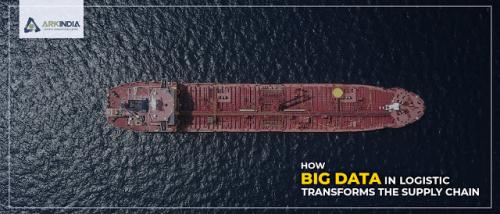
Big data is the term given to analyze and extract information from large sets of data that are important to big industries. It is called big data because the complexities that come with such a large set of variables and numbers can only be dealt with unique processes and not regular data-processing application software. Out of all the industries it is so vitally placed in, big data plays a very significant part in the Logistics Industry and the Supply chain aspect of businesses.
Big data analytics processes bring multi-dimensional help for businesses by resolving issues at tactical, strategic, and operational levels. This allows companies to make decisions that are better informed and based on data from their own processes. This way, based on factual data, companies can improve and learn from their own data. Using big data, one can successfully reduce delivery times, remedy communication gaps between retailers and manufacturers, and so much more. Let’s have a look at three ways in which big data is transforming the world of logistics.
1. Faster Last Phase of Delivery
Have you ever noticed how getting a package delivered from the post office to your home using a custom local delivery service (or a taxi service, for that matter) is almost just as expensive as the entire shipping between state borders? This is because of a lot of reasons like the cost of delivering an individual package versus a consignment full of a lot of items being shipped to the same place.
This doesn’t change the fact that this extra cost is still a nuisance for the seller since they have to receive an all-inclusive price. A lot of other challenges come with this in individual cases, like the size of the package making it difficult to be delivered, the delivery person’s caution during the last phase of delivering, and the potential absence of the recipient who must sign for the package.
Big data helps in minimizing this potential cost by taking into factors the modern ways of collecting data. Using the GPS feature of smartphones and the ever-spreading Internet of Things, collecting data to plan things better has been made possible.
2. Optimized Shipping Routes
The life’s blood of a supply chain is the shipping routes and how efficiently they are planned and operated. The logistics part of a supply chain is where there is the most potential for optimization. To save money and deliver faster, logistics companies are very interested in optimization. It gives them a better chance at maintaining relationships and getting business.
With big data analytics and the predictive analysis it provides, companies can gain an edge over their competition when making accurate decisions for the optimization of shipping routes. One can put sensors on delivery trucks that provide real-time data of the position and condition of the truck. There are even sensors that can predict something that could possibly go wrong. Combine that with weather data, road maintenance data, management schedules of the fleet, and personnel schedule; one has enough data to strategically make better plans.
3. AI Automation in Warehouses and Supply Chains
Modern technological advancements make it possible for Artificial Intelligence to be integrated into business in the best ways. It makes processes faster and more efficient without having to rely on manpower and intelligence much. These automated processes rely on the ingenuity that is provided by big data.
Big data is how the AI learns patterns and behaviors to be able to make these processes quicker and more efficient. For example, the database location of items in a warehouse and proper markings that correspond with these items is what makes it possible for AI-powered robots to find these items quickly.
Eventually, in the near future, it is expected for the entire supply chain to be fully automated with robot arms taking care of the locating and loading aspects, whereas self-driving vehicles (which are being perfected in real-time) can take care of delivering the items with precision..